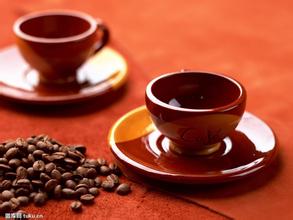Yunnan Tieka Coffee Bean Flavor description method introduction to Grinding scale of Variety producing area
Yunnan Tieka Coffee Bean Flavor description method introduction to Grinding scale of Variety producing area
Yunnan Organic Iron pickup Coffee is the oldest variety in Yunnan. In 2011-12, the annual output of the bean in Yunnan was only 30, 000 tons, which is very rare. More than 15 mesh, altitude: 1200 meters above, fruit acidity: strong, characteristics: fresh coffee in this season raw beans, mellow, delicate and lubricated taste, good acidity and personality. Growing on Gaoligong Mountain in Lujiangba, Baoshan, Yunnan Province, natural high-quality coffee uses a variety of natural technologies to ensure the growth of coffee trees, because the natural ecological environment is the goal of organic coffee consumers. Quenching suggestions: hand cup, siphon pot, mocha pot; baking degree: medium
Small-grain coffee is suitable for growing in the mountains at an altitude of 800 to 1800 meters. If the altitude is too high, it will taste sour, and if it is too low, it will taste bitter. Small grains of coffee are mostly planted in dry and hot valleys about 1100 meters above sea level, so they are moderately sour, rich and mellow. There is a unique environment suitable for the growth of small seed coffee in many areas of Yunnan, and the quality of small seed coffee is excellent.
The planting areas are mainly distributed in Lincang, Baoshan, Simao, Xishuangbanna, Dehong and other states. The average temperature of Baoshan is 21.5℃, and the highest is 40.4℃, which is basically frost-free all the year round. It is recognized as the best producing area of small-grain coffee. The small-grain coffee cultivated here is famous at home and abroad for its strong but not bitter, fragrant but not strong, well-proportioned small noodles, mellow and fruity. International Coffee Organization tasting experts evaluate Yunnan coffee as the highest quality coffee in the world, such as Colombian wet-processed small-grain coffee. Variety
Typica: the oldest native variety in Ethiopia and southeastern Sudan. All Arabikas are derived from Tibika. The flavor is elegant, but the physique is weak, the disease resistance is poor, the fruit yield is less. Excellent manor beans such as the Blue Mountains of Jamaica, Manning of Sumatra and Kona of Hawaii all belong to Tibika. Tiebika top leaf is red copper, called red top coffee, Tibika belongs to Arabica.
Catimor: in 1959, the Portuguese mixed Brazilian Kaddura and Timo to develop a disease-resistant Katim / Katimo, which is now an important variety of commercial beans.

Important Notice :
前街咖啡 FrontStreet Coffee has moved to new addredd:
FrontStreet Coffee Address: 315,Donghua East Road,GuangZhou
Tel:020 38364473
- Prev

The difference between Arabica and Robusta; introduction to the regional treatment of manor production
Arabica coffee has a varied and broad potential flavor. Arabica coffee produced in different regions, different elevations and different climates usually has its own characteristics and can show a completely different flavor. "Arabica" coffee smells like grass when it is not roasted. After proper roasting, it shows a "fruity" aroma.
- Next

Introduction to the method of planting coffee in Indonesia-the treatment process of production environment
Indonesian coffee planting method-production environment treatment process introduction 1. The use of a small funnel: put a piece of filter paper on the inside of the funnel and put a cup of coffee powder (8-10) into the filter paper pocket. (prevent coffee from entering the interlayer between the filter paper and the funnel wall) wet the coffee powder with water at a suitable water temperature, and then add water later (the water should be added slowly to avoid rushing the coffee dregs above the edge of the filter paper.
Related
- Beginners will see the "Coffee pull flower" guide!
- What is the difference between ice blog purified milk and ordinary milk coffee?
- Why is the Philippines the largest producer of crops in Liberia?
- For coffee extraction, should the fine powder be retained?
- How does extracted espresso fill pressed powder? How much strength does it take to press the powder?
- How to make jasmine cold extract coffee? Is the jasmine + latte good?
- Will this little toy really make the coffee taste better? How does Lily Drip affect coffee extraction?
- Will the action of slapping the filter cup also affect coffee extraction?
- What's the difference between powder-to-water ratio and powder-to-liquid ratio?
- What is the Ethiopian local species? What does it have to do with Heirloom native species?

